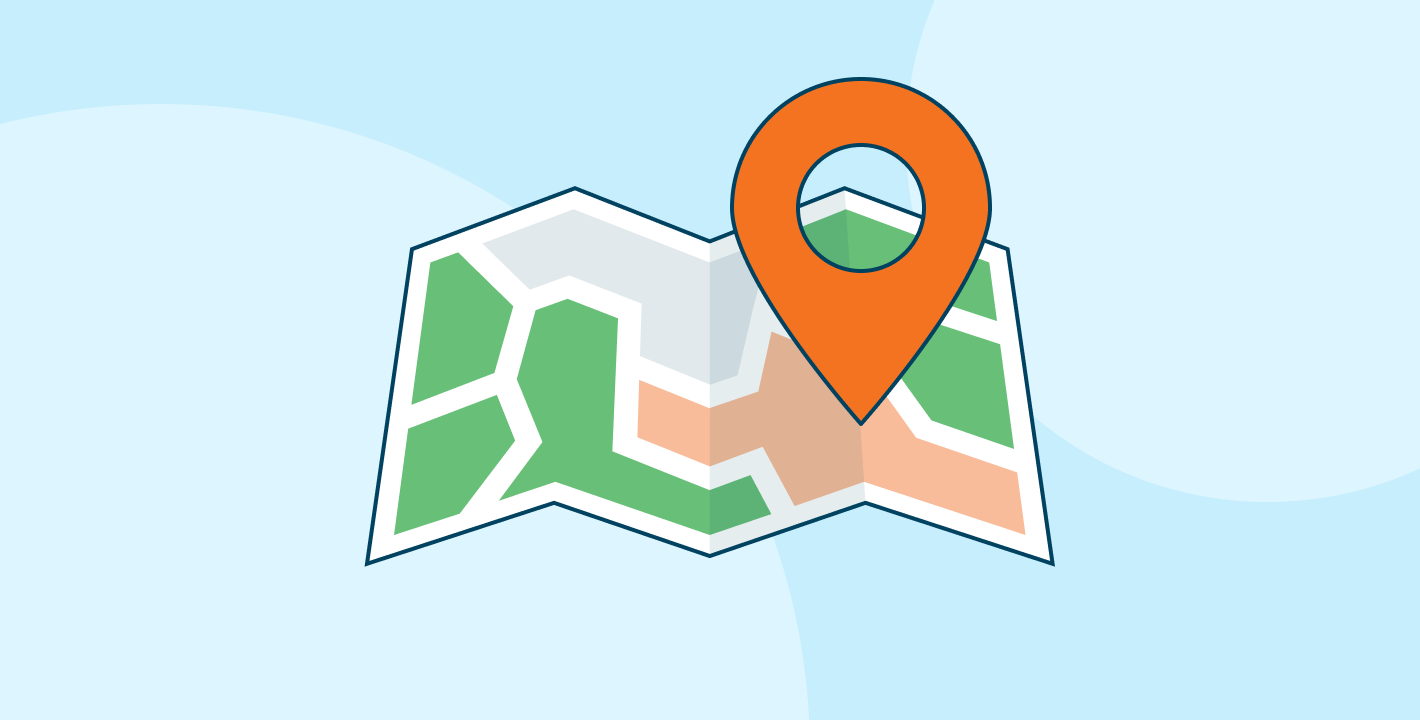Local marketing is an often overlooked part of a businesses internet strategy. With consumers taking to Google to find out information like opening times, restaurant suggestions, or how far away the nearest butcher is, there’s a great opportunity to gain exposure to your local consumer base.
Almost half of Google searches showed local intent with a third of consumers checking local businesses online every day.
In this guide, we’ll take a look at what local marketing is, some examples of successful local marketing campaigns, and how you can promote your business with local marketing.
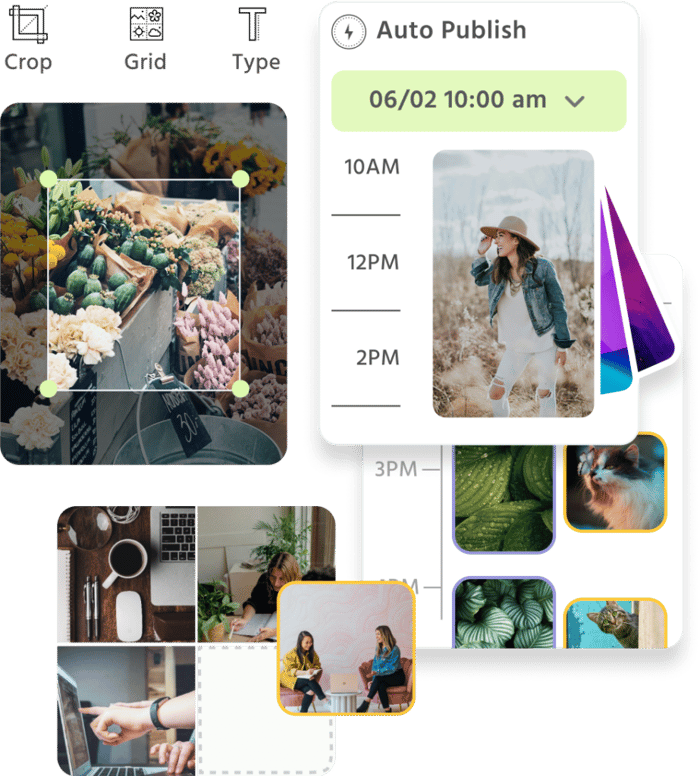
Manage all your social media accounts in one place.
Craft, schedule, & auto-post content to all your social channels, then track analytics and manage interactions from a single, easy-to-use dashboard.
What is Local Marketing?
Local marketing is a strategy that targets potential customers within a specific radius – typically 50 miles – of the physical location of a business. It’s also known as location-based marketing, neighborhood marketing, or local store marketing.
Local marketing can work for any brand that has a physical brick-and-mortar location, like shops and bars, or any locally-based businesses that travel to a customer’s location, such as plumbers and electricians.
Local businesses can use a range of outbound and inbound marketing methods to attract customers, including:
- Inbound: Google Business Profile, Local SEO, social media marketing, etc.
- Outbound: Display ads, attending local events, community involvement, etc.
(We’ll look at more of these later…)
Local Marketing vs Global Marketing
Local marketing is different from global marketing.
Most marketing advice focuses on global (or general) marketing, like a software service. But local businesses don’t need global reach – they need to target their community.
One of the potential dangers with local marketing is that you can think too big and waste time and money on the wrong location and audience.
For example, if you have a dental practice located in Michigan, you should target “dental practice in Michigan” rather than the generic term “dental practice” so that you reach people in your local area.
93% of consumers say they won’t travel more than 20 minutes from home to make an everyday purchase. So make sure you direct all of your efforts at the right person within a precise geographic area.
Why is Local Marketing More Important Than Ever?
Local marketing is especially important for small and medium-size businesses that rely on people visiting their physical location to purchase goods or access a service, including shops, dentists, physiotherapists, bars, restaurants, and car dealerships.
Consumers rely on referrals and the internet to find those local businesses:
- 92% of people believe their word-of-mouth referrals from friends and family over other forms of advertising.
- 98% of internet users read online reviews for local businesses.
- 21% of consumers look at local businesses online every day.
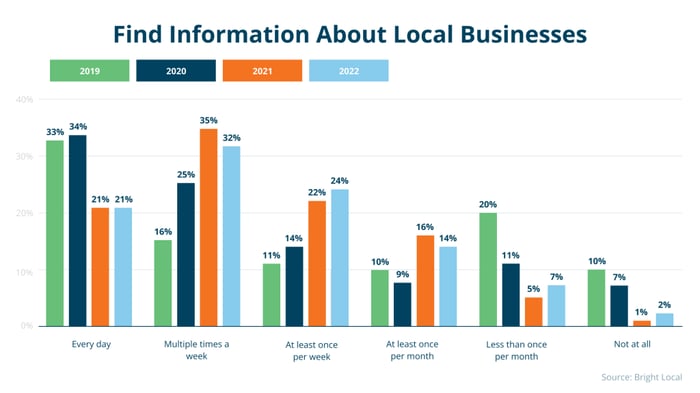
The good news is that Google’s search algorithm uses a searcher’s location to display relevant local businesses, even if a user doesn’t specify a location or use “near me” in their query.
For example, if you enter a generic term like “coffee shop”, the first results that Google displays are the coffee shops local to you:
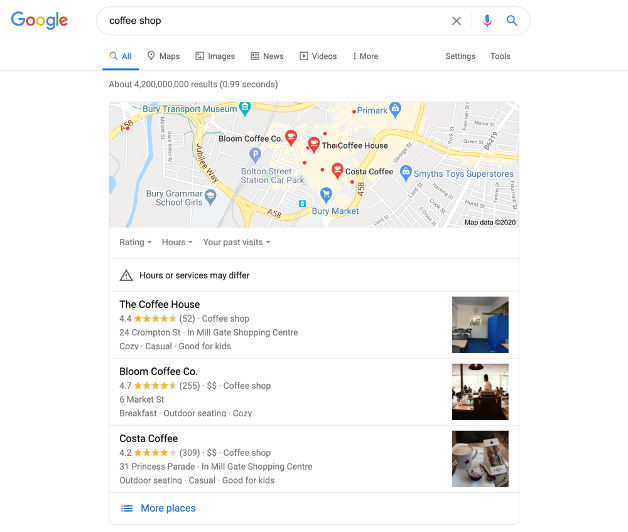
That’s a great advantage for local businesses, and it’s not too difficult to implement.
3 Examples of Successful Local Marketing Campaigns
Let’s take a look at some examples of successful local marketing campaigns for different-sized brands.
Nike
Leading global brand Nike used the creative agency, Wieden + Kennedy, to develop a London-specific marketing campaign called “Nothing Beats a Londoner.”
The ads focused on being a young sportsperson in London and were filmed in lesser-known areas of London, like Peckham and Dalston, featuring Nike athletes such as Dina Asher-Smith and Harry Kane.
Each of the athletes posted their scene as a standalone piece of content on Instagram, linking to the next competitor to create a “massive social media battle.” The full version of the film was later broadcast across TV, cinema, and online.
According to the fashion search platform Lyst, London searches for Nike products were up 93% following the ad’s launch. And as a spin-off, Nike searches were also up 72% in Manchester and 54% across the UK.
Airbnb

Airbnb has grown to 7M+ listings worldwide, covering more than 100K cities and over 220 countries and regions. But although Airbnb is a global brand, they’ve used localized marketing to both hosts and travelers.
They’ve created content targeting specific markets using their Airbnb magazine (available online and in print), country-specific social media campaigns (in the local language), trusted city guidebooks, and local host-led experiences for tourists.
Brent Jones
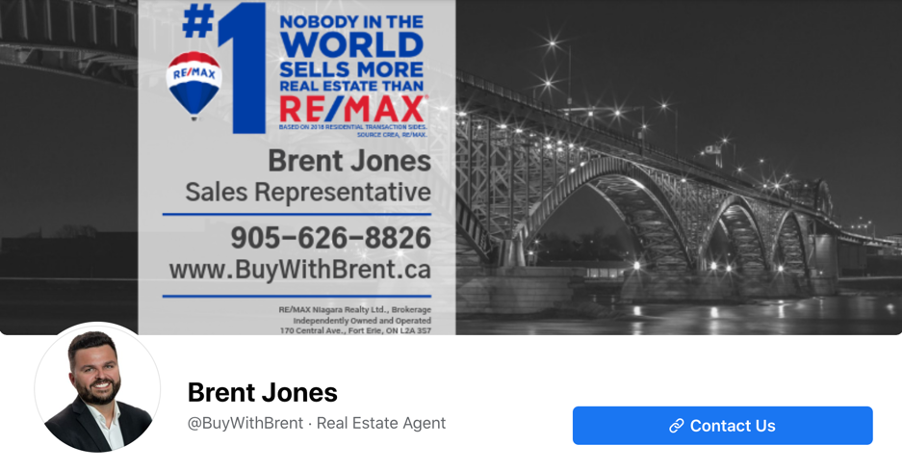
Real estate agent Brent Jones doesn’t just sell homes – he’s an integral part of the Fort Erie community.
On his social media pages, you’ll find examples of contests, giveaways, contactless and curbside bottle collections for charity (during COVID-19), plus glowing 5-star reviews and real estate listings.
Plus, Brent also hosts the Fort Erie podcast featuring members of the local community.
His mix of online and offline local marketing activities makes sure he’s front of mind when Fort Erie residents want to sell or buy their next home.
How to Promote Your Business With Local Marketing
In this section, we’ll explore the digital marketing strategies and platforms you can use to market your business, split into three parts:
- Local SEO
- Content Marketing
- Paid Advertising
Local SEO
Local SEO aims to increase the visibility of local businesses in search results, location pages, and online maps. It’s a vital part of local marketing:
- 86% of all consumers use Google to appraise local businesses.
- “Near me” searches have grown significantly, with searches like ‘near me with outdoor seating’ seeing a 150% increase in 2021.
- 72% of consumers that do a local search will visit a store within 5 miles.
The Map Pack (Local Pack)
If you’ve done any local searches, you’ll be familiar with the “Map Pack,” also known as the “Local Pack” or “3-Pack”. It’s the set of three local business results and a map that appears at the top of the search results page. For example, if you search for “barbers near me”, you’ll see something like this:
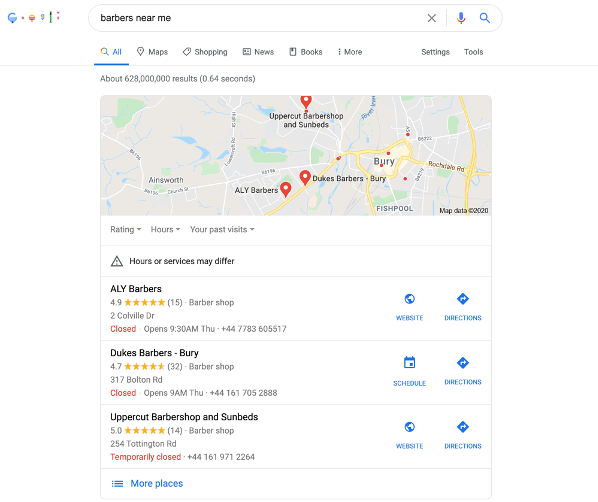
Let’s take a look at how you can get your business featured in the Map Pack.
Major local ranking factors
Local SEO works much the same as “normal” SEO. However, Google uses a different set of ranking signals, including:
- The location that the person is searching from
- NAP citations
- Presence of Google Business Profile listing
- Keywords used in Google My Business profile
- Sentiment of online reviews
- Keywords used in online reviews
- Number of “check-ins” at that location
- Shares on social media
- Google Maps star rating for that business
According to a WhiteSpark survey, these are the major local search ranking factors experts believe:
- Google Business Profile Signals (Proximity, categories, keyword in business title, etc.) 36%
- Review Signals (Review quantity, review velocity, review diversity, etc.) 17%
- Website Signals (Presence of NAP, keywords in titles, domain authority, etc.) 16%
- Link Signals (Inbound anchor text, linking domain authority, linking domain quantity, etc.) 13%
- Citation Signals (IYP/aggregator NAP consistency, citation volume, etc.) 7%
- Behavioral Signals (Click-through rate, mobile clicks to call, check-ins, etc.) 7%
- Personalization (E.g. area-specific targeting) 4%
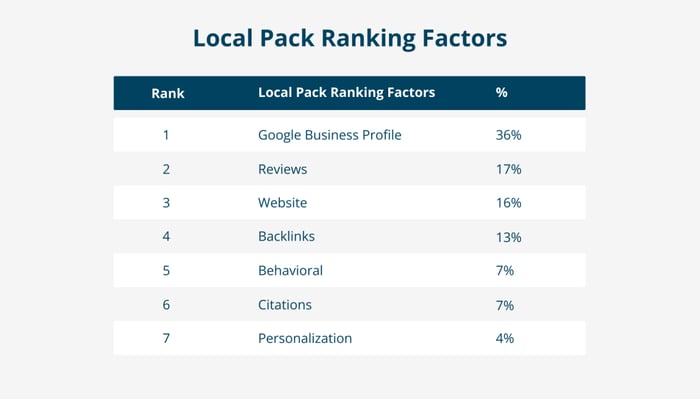
As you can see, Google Business Profile is the most important, so let’s start there.
Optimize your Google Business Profile listing
Google Business Profile is Google’s free local business directory, formerly known as Google My Business. If you want to appear in the search results on Google as a local business, then you’ll need to get a Business Profile. A business may still appear on Google if the company has its details and you’ll be able to “claim this business” to take over the profile.
In short:
- Confirm your information is up to date. Including images of signage, storefronts, and all types of branding.
- Select the correct business category (and secondary categories). Google recommends choosing the fewest number of categories to describe your core business.
- Check all settings and input fields are accurate and relevant.
- Only one Business Profile is used, otherwise this can cause issues across search results and Google Maps.
When all your information is consistent, then Google can see you’re a legitimate business. The more information you provide, the better your profile will look in search results.
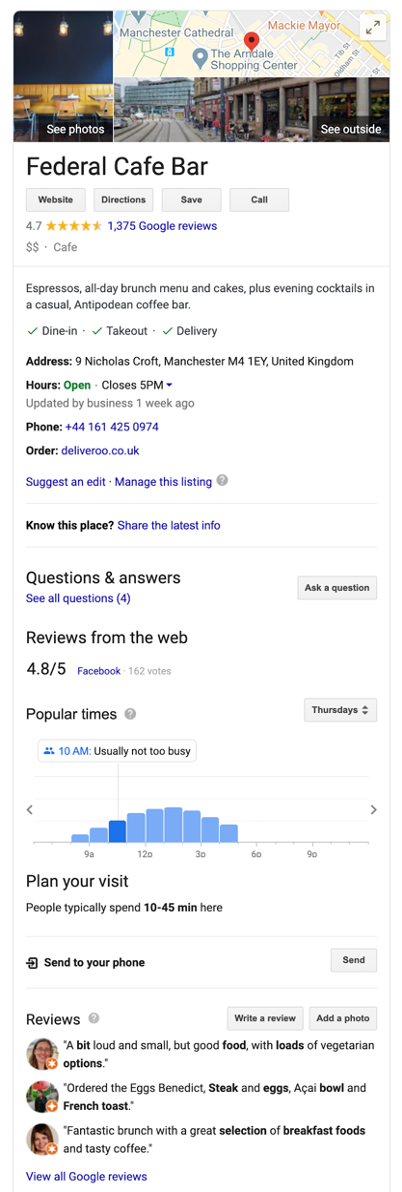
Gather Google reviews and testimonials
Reviews are another important ranking factor, so it’s important to get as many positive reviews as possible. Google prompts visitors to leave a review on a business when they show up on a results page. The platform displays a selection of reviews prominently on each profile, providing a quick snapshot of what’s good and not so good.
But whether it’s a positive or negative review, you should reply to all of them to show that you care. Plus, you can always turn a negative into a positive.
Positive reviews can help in 3 ways:
- Reviews are a ranking factor in local search results.
- Great reviews on your Business Profile will lead to a higher click-through rate.
- Positive reviews create social proof and build trust in your business.
According to BrightLocal, 88% of consumers say they’re more likely to do business if the owner responds to reviews, regardless of whether they’re positive or negative.
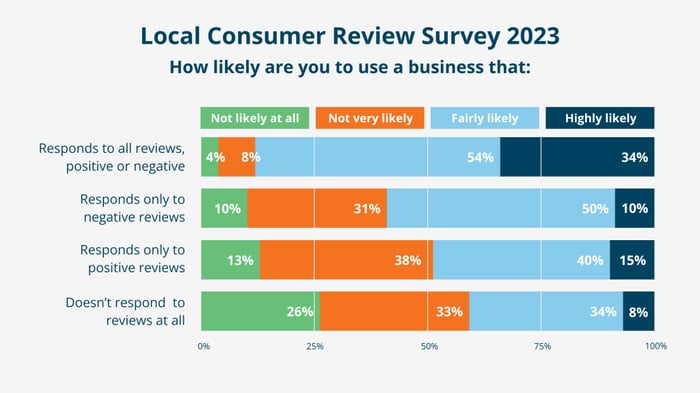
Expand your citations
Citations play a significant role in local search results. A citation, also known as a NAP (Name/Address/Phone), refers to any mention (with or without a link) of your business online.
The more citations you have, the better, as it makes your business more credible to Google. But, like GMB listings, you need to ensure your NAP is correct and consistent on every citation.
Try to find local directories and websites where you can list your business. For example, you could search for “business directory + town/city” or your local .gov and .edu sites like “www.[town].gov”. You can also check to see where your competitors are listed.
There are also global sites that serve as business directories, including Google, Facebook, YouTube, Apple Maps, Bing, Yelp, and Tripadvisor.
Top Citation Resources:
Data aggregators like Factual, Neustar, Foursquare, and Infogroup are massive databases built from various listing sources, including Yellow Pages, phone directories, and utility records that provide citation (NAP) information to search engines.
You can use a service like the BrightSpark Citation Builder to manage all your citation and aggregator submissions so that your data is consistent everywhere.
Optimize your website
A local business website needs to load quickly and be mobile-friendly. Consumers are impatient, and whether they’re searching on desktop or mobile, they’ll want to see results quickly and clearly. Plus, Google’s primary search index is mobile-first, so mobile optimization is a must.
You’ll also need to consider your site structure, especially if you have more than one business location. For example, a plumbing business with locations in Los Angeles and San Francisco might look something like this:
- https://www.heroplumbing.com/locations/los-angeles-ca/service-areas/area1
- https://www. heroplumbing.com/locations/san-francisco-ca/products/product1
- https://www. heroplumbing.com/locations/san-francisco-ca/services/service1
As a local business, you’ll want to include relevant information on your website, including:
- Business name, address, phone number (NAP)
- Opening hours
- Services or products you offer
- Reviews and testimonials
- Areas you cover
- An embedded map
- Parking info
Take a look at the Federal Cafe website to see these features in action.
Content Marketing
Content marketing can build trust, drive traffic, generate leads, and keep customers loyal, and is perfect for local marketing.
Target local email marketing
Email marketing is a highly effective, but often overlooked, medium when it comes to local marketing.
A solid email marketing strategy will help you:
- Build a list of prospective customers.
- Contact customers and prospects through regular newsletters and emails.
- Send offers such as special coupons, discount codes, and events.
- Provide a personalized service based on interactions and transactions.
- Generate visits to your website, telephone inquiries, and foot traffic to your business location.
All of these activities can keep your business in front of your customers and build trust.
Localize your social media marketing
Social media is one of the quickest and most efficient ways to connect with local consumers. But how do you get local on global platforms like Facebook and Instagram? Here are eight ideas to try:
- Set a location in your profile.
- Tag the location of each post.
- Use local hashtags.
- Start conversations on things that are happening locally.
- Share pictures and videos of your brand participating in local events.
- Host contests with local prizes that your community will appreciate.
- Integrate local festivals and customs into your social media posts.
- Share content from local businesses and celebrities.
Hook up with local influencers
Local influencer marketing is another way for small businesses to promote their brand. Just like global influencer marketing, you’ll need to find relevant influencers who can help to promote your products or services to their audience.
Make sure your influencer can reach your target customers via his followers, reflects well on your brand, and only charges a reasonable fee.
Localize your web content
Writing and sharing relevant local content is a tried-and-tested way to reach, engage, and convert local consumers into loyal customers. Focus on creating relevant community content rather than just talking about your products or services.
For example, house buyers moving into a new location will want to research the whole area. That’s why real estate agents include community pages like this one for the Lincoln Park neighborhood in Chicago:
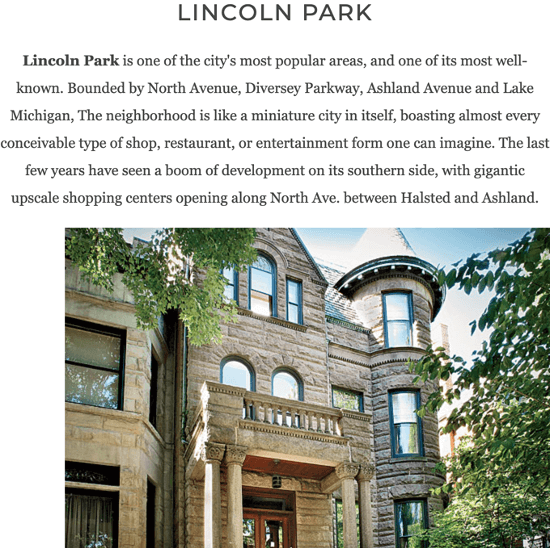
Aside from community pages, you can provide other valuable content. For example, the Windermere Real Estate Blog offers tips and advice on a selection of home-related topics, including buying, selling, market news, community, and architecture.
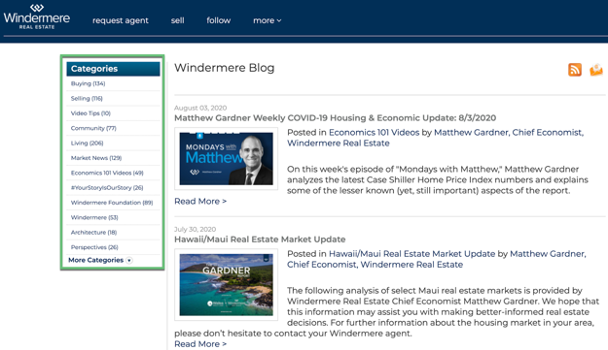
Providing content like this positions you as a credible source and shows your expertise or authority in a particular location.
Paid Advertising (Search and Social)
Paid advertising offers a quicker way to get your local business promoted on both search and social platforms.
Run a PPC campaign
Local PPC search ads can give you targeted exposure, leading to more in-store visits or calls. For example, if someone searches for “electrician near me” they could see your ad at the top of the search results:
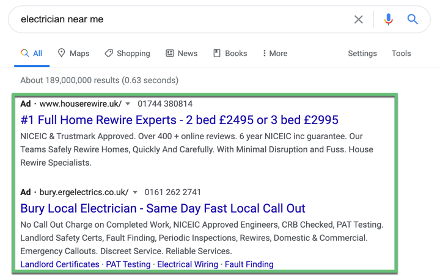
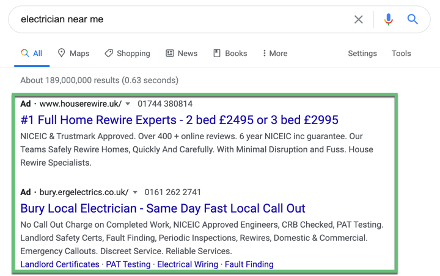
Local search ads can feature your business locations, directions, opening hours, and contact options.
Run Google Local Services ads
If you’re a local service provider, you could run a local services ad that displays your details at the top of the search results. For example, if you search for “locksmith los angeles” you’ll see these types of ads:
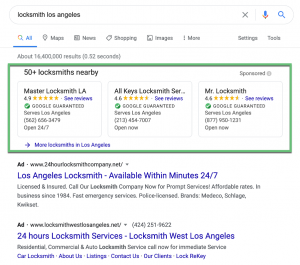
- Clicking on an individual ad takes you to the business listing page in the Local Services ad unit.
- Clicking on the “More locksmiths in Los Angeles” link takes you to a separate page listing businesses in the Local Services ad unit.
Unlike PPC ads where you choose keywords to target for your business, with service ads, you select your business category, and Google decides the keywords.
But these ads also include a “Google Guaranteed” trust mark because they verify the services before listing them, which is great for consumers.
Try Facebook hyperlocal ads (local awareness ads)
On social media, Facebook offers hyperlocal ads (local awareness ads) that target a small, specific local area. For example, people within a particular zip code. By narrowing your target, you can make a more modest ad budget go further.
You just enter your address, set your radius, gender, and age range, add a photo and message, and Facebook routes the ads to people in the vicinity.
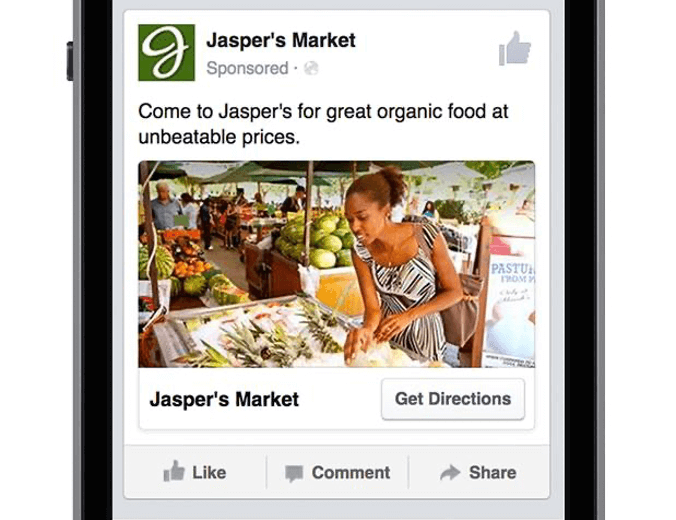
Get listed on trusted provider sites
Depending on your business, you may be able to pay a small fee to get listed in directory-type lead generation sites, such as Checkatrade or Angie’s List. Consumers prefer using these types of sites to narrow their search to recommended tradespeople.
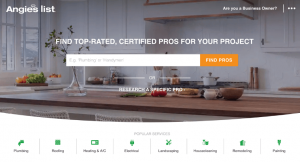
Social media
Social media is a powerful tool for businesses to reach customers locally and globally.
If you’re a small business or franchise, creating a social media profile for your local business can help you connect with your customers on a personal level. Here’s a quickstart guide for using social media to promote a local business:
Create local profiles
Did you know that 53% of Facebook users are more likely to buy from a business they can message?
So, make sure to interact with your customers and respond to their messages and comments.
Another way to use social media for local marketing is to follow and interact with other businesses in your area. Share and celebrate local events, successes, and information. You can also follow local hashtags on Twitter, TikTok, and Instagram and create content around those hashtags to reach more local audiences.
If you’re a B2B business, LinkedIn is a great platform to connect with other businesses in your area. You can join local LinkedIn groups and participate in discussions to build your brand’s reputation as a valuable resource in the community.
Remember, social media is a two-way conversation, so don’t be afraid to engage with your local audience and showcase your brand’s personality and values.
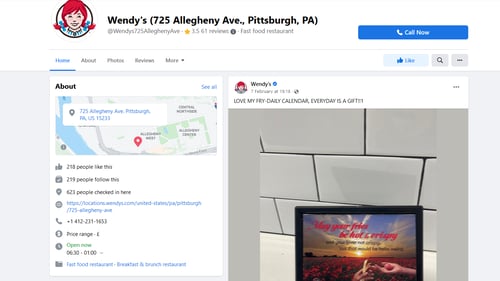
Join local groups on Facebook
Joining local Facebook groups is a great way to get your business in front of potential customers in your area. It’s like hanging out at the neighborhood coffee shop and chatting with people about what you do — except it’s all online.
But remember, you don’t want to be that annoying person who always talks about their business and never engages with the group. So make sure to share promotions and discounts that group members might find interesting, and respond to comments and questions in a friendly and helpful way.
You can also use Facebook groups to get involved with local causes and show your support for your community. It’s a great way to give back and build a positive reputation for your business.
Just keep in mind that each group has its own rules and guidelines, so make sure to read them before you start posting. Always be respectful of other members and their opinions, which may include your local competitors.
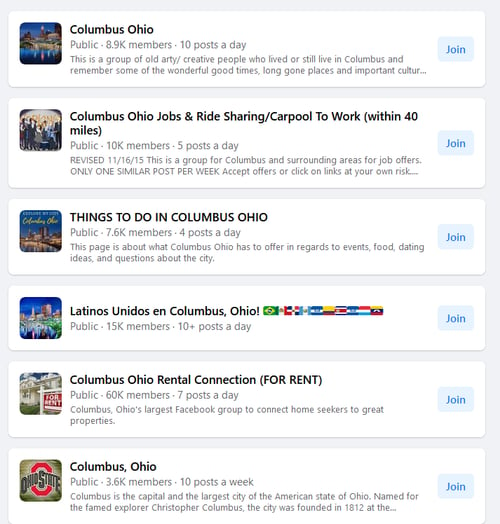
Run social media promotions
Social media is a great tool for businesses to connect with their local customers and build a loyal following. Here are a few ideas for running social media promotions:
- Offer a discount to in-store customers who follow a social account (and grab an email too!): Encourage in-store customers to follow your social media accounts by offering a discount on their purchase in exchange. This not only incentivizes customers to follow you on social media, but also provides you with their email address for future marketing efforts.
- Host giveaways on social media that encourage social shares: Social media giveaways are a great way to increase engagement and reach on your social media platforms. Encourage users to share your giveaway on their own social media accounts for a chance to win. This increases brand exposure and helps to attract new customers.
- Engage and respond to your customers: Social media is a two-way street, so make sure to engage and respond to your customers. Responding to comments and messages in a timely and helpful manner can increase customer satisfaction and loyalty.
Just make sure to follow the rules and guidelines of each platform, and always keep your customers’ needs and preferences in mind.
Build your own community
Building your own community on social media can be a great way to establish a loyal customer base and promote your business. Here are some tips on how to build your own community:
- Start your own Facebook Group: A Facebook Group can be a great way to bring together people who share common interests or hobbies related to your business. You can use the group to share news, promotions, and events related to your business, as well as engage with your customers.
- Share user-generated content on TikTok and other social media: User-generated content (UGC) is content that your customers create themselves and share on social media. Sharing UGC on your business’s social media accounts can help to establish a sense of community and show that you value your customers’ input and creativity.
- Use audio and video to stand out on social media: According to a recent study, 66% of consumers believe that audio and video help brands to stand out on social media. So, consider incorporating audio and video into your social media strategy to help your business stand out.
- Run polls and surveys to get customer feedback: Polls and surveys can be a great way to get feedback from your customers and show them that you value their opinions. You can use the feedback you receive to improve your business and tailor your products and services to your customers’ needs.
- Host live events and live stream your business: Hosting live events and live streaming your business can be a great way to build a sense of community and engage with your customers in real time. For example, you could go live while packing orders, which is what popular TikTok store, Mollies Sweet Shop, does to improve engagement.
By building a community around their business on social media, Mollies Sweet Shop has been able to establish a loyal customer base and increase their brand awareness.
Reviews sites
When it comes to building trust with potential customers online, reviews can be a powerful tool.
By using customer reviews on your own website, you can showcase your reputation and build trust with your audience. In this section we’ll take a look at the websites that collect reviews, and how you can make the most out of your customer’s opinions.
Claim your business
If you run a business, you’re probably already familiar with review sites, but in case you’re not, here are some of the most prominent sites other than Google Business Profile:
These sites allow customers to leave reviews and ratings for your business, which can be great for attracting new customers. They can also be a double-edged sword if someone decides to leave a bad review. Regardless, it’s important to claim your business listing on these sites.
Claiming your listing allows you to respond to reviews, update your business information, and demonstrate to potential customers that you care about their feedback. Plus, you can even use positive reviews from these sites on your own website to develop trust with visitors.
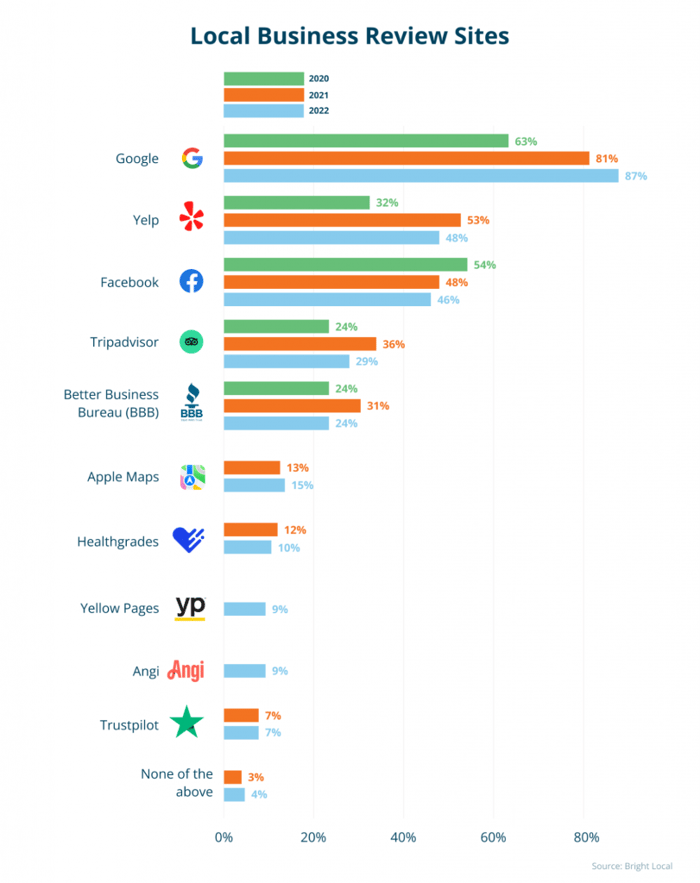
Respond in good faith
When it comes to managing reviews on your business listing, it’s important to respond in good faith.
While it can be frustrating to come across a review that doesn’t reflect the reality of the situation, responding in a hostile or defensive manner can do more harm than good.
Instead, approach every review with a courteous and constructive attitude, even if the reviewer is being unreasonable or unfair.
Engaging with both positive and negative reviews can show consumers that you care about their feedback and are willing to work towards resolving any issues they may have had.
Keep your profiles updated
Keeping your business profiles updated on review websites is crucial to ensure that potential customers have accurate and current information about your business.
Review sites often include important details such as your business hours, contact information, and menu items for restaurants. Once you’ve claimed your listing on these sites, it’s your responsibility to keep the information updated.
Outdated information can lead to missed opportunities, lost sales, and dissatisfied customers. By regularly checking and updating your business information on review sites, you can ensure that customers have the most up-to-date information about your business.
Further local marketing strategies
Here are some offline/physical marketing actions that local businesses can also take as part of a 360-degree strategy, but beyond the scope of this article.
- Create a loyalty program
- Create a referral program
- Launch a coupon campaign
- Offer a free consultation or advice
- Get in the local media – Newspaper/Radio/TV/Blogs/Journalists
- Launch a joint venture with another local business
- Be active in your community
- Host or sponsor local events
- Donate time and talents to a local non-profit
Local Marketing in a Nutshell
Local marketing is on the increase as more and more consumers search nearby for their goods and services.
You can promote your local business with a mix of inbound and outbound marketing activities, including Local SEO, content marketing, and paid advertising to ensure you’re on the radar of consumers in your area.
